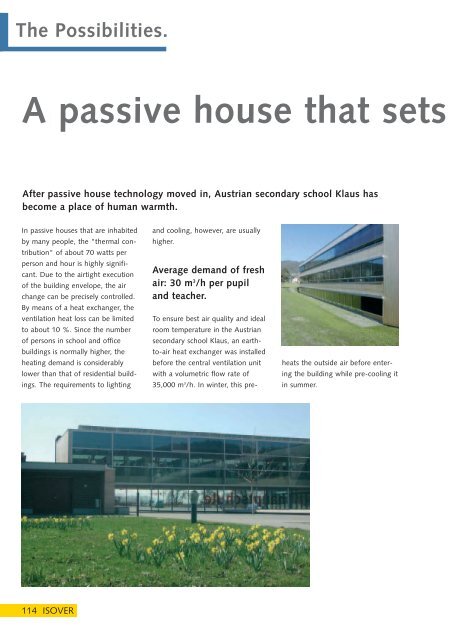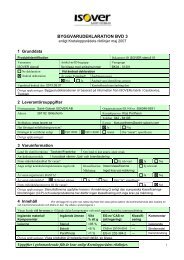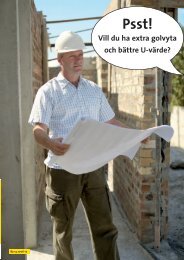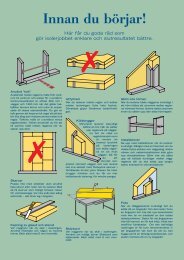ISOVER Passivhaus Engl.
ISOVER Passivhaus Engl.
ISOVER Passivhaus Engl.
You also want an ePaper? Increase the reach of your titles
YUMPU automatically turns print PDFs into web optimized ePapers that Google loves.
The Possibilities.<br />
A passive house that sets<br />
After passive house technology moved in, Austrian secondary school Klaus has<br />
become a place of human warmth.<br />
In passive houses that are inhabited<br />
by many people, the "thermal contribution"<br />
of about 70 watts per<br />
person and hour is highly significant.<br />
Due to the airtight execution<br />
of the building envelope, the air<br />
change can be precisely controlled.<br />
By means of a heat exchanger, the<br />
ventilation heat loss can be limited<br />
to about 10 %. Since the number<br />
of persons in school and office<br />
buildings is normally higher, the<br />
heating demand is considerably<br />
lower than that of residential buildings.<br />
The requirements to lighting<br />
114 <strong>ISOVER</strong><br />
and cooling, however, are usually<br />
higher.<br />
Average demand of fresh<br />
air: 30 m 3 /h per pupil<br />
and teacher.<br />
To ensure best air quality and ideal<br />
room temperature in the Austrian<br />
secondary school Klaus, an earthto-air<br />
heat exchanger was installed<br />
before the central ventilation unit<br />
with a volumetric flow rate of<br />
35,000 m3 /h. In winter, this pre-<br />
heats the outside air before entering<br />
the building while pre-cooling it<br />
in summer.









